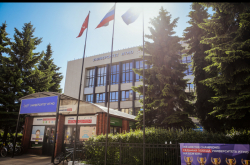There were a total of 448 universities from 81 federal subjects of Russia included in the ranking. Altogether among them were: 127 engineering universities, 89 classical universities, 54 agricultural universities, 61 universities from the field of management, 69 universities in humanities and 48 medical universities.
The universities were evaluated based on such criteria as: the demand for trained professionals by employers, commercialization of intellectual property created by the university, as well as the demand for the research work of the university. The top two spots amongst the engineering universities is the same as last year, MEPhI and ITMO.
ITMO University continues to have excellent results in the “Share of funds from commercializing intellectual property” criteria, 49.63%. For the other two criteria, the university is also stable: the share of graduates who received referrals for jobs is 53%, while the citation index of the staff's publications amounted to 16 points. MEPhI also had one of the highest results in terms of the number of graduates who received referrals for jobs, with 90.8%, and scored 27 points in the citation index criteria. For the latter criteria MEPhI became the absolute leader amongst the engineering universities. However the Moscow university is behind in other criteria such as the commercialisation of intellectual property, with only 30.79%. In third place there were some changes, with Bauman University taking last year’s spot from Samara State Technical University.
Within the top seven most sought-after engineering universities were also the National Research University of Electronic Technology, Moscow State Technological University “Stankin”, Perm National Research Polytechnic University, and MISIS National Research University. Information about university rankings of other groups of universities can be found here (link in Russian).
According to the organizer of the “Social Navigator” project, Natalia Tyurina, this research is of great interest not only to employers, but also to prospective students.
“The ranking is well-established; for the second year in a row it shows great readability and relevance: many young people choose their educational path on its basis” shares Natalia Tyurina with RIA News.
This ranking was first introduced in 2015. The purpose is for it to become a personal resource for citizens and for the country to understand the current situation in the field of higher education.
ITMO University News Portal




